Tucson Rent Report: October 2025
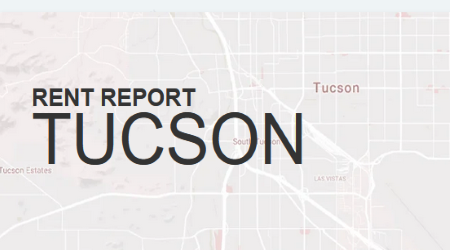 TUCSON, AZ (October 1, 2025) — The Apartment List October 2025 Tucson Rent Report is out. Currently, the overall median rent in the city stands at $1,048, after falling 0.9% last month. Prices are now down 4.3% year-over-year. Read on to learn more about what’s been happening in the Tucson rental market and how it compares to trends throughout the nation as a whole.
TUCSON, AZ (October 1, 2025) — The Apartment List October 2025 Tucson Rent Report is out. Currently, the overall median rent in the city stands at $1,048, after falling 0.9% last month. Prices are now down 4.3% year-over-year. Read on to learn more about what’s been happening in the Tucson rental market and how it compares to trends throughout the nation as a whole.
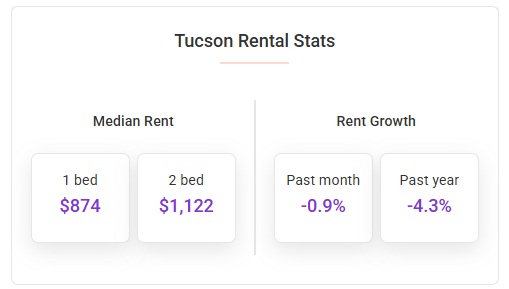
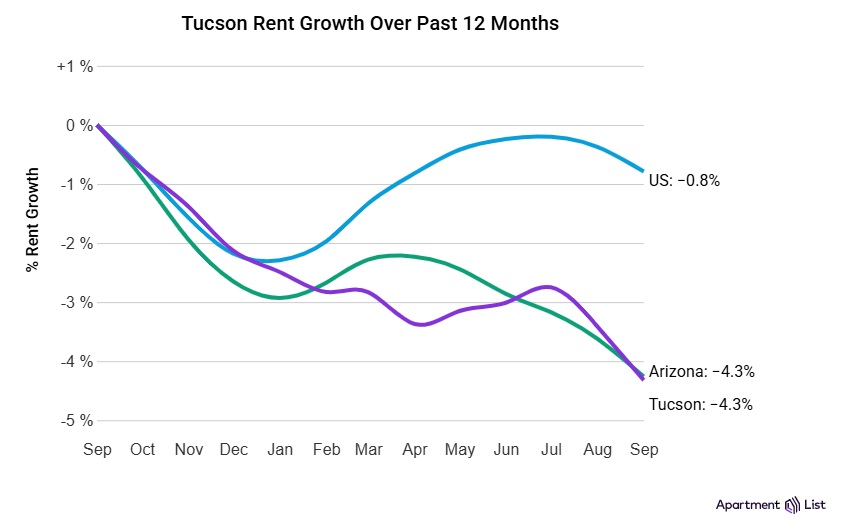
Tucson rent growth in 2025 pacing below last year.
Nine months into the year, rents in Tucson have fallen 1.9%. This is a slower rate of growth compared to what the city was experiencing at this point last year: from January to September 2024 rents had increased 0.1%.
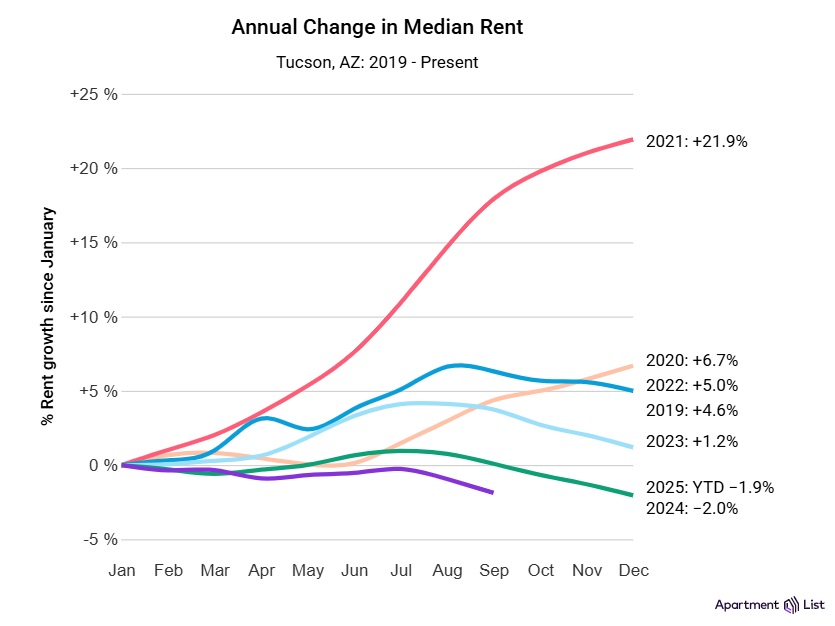
Month-over-Month Rent Growth Among 100 Largest Cities In the U.S.
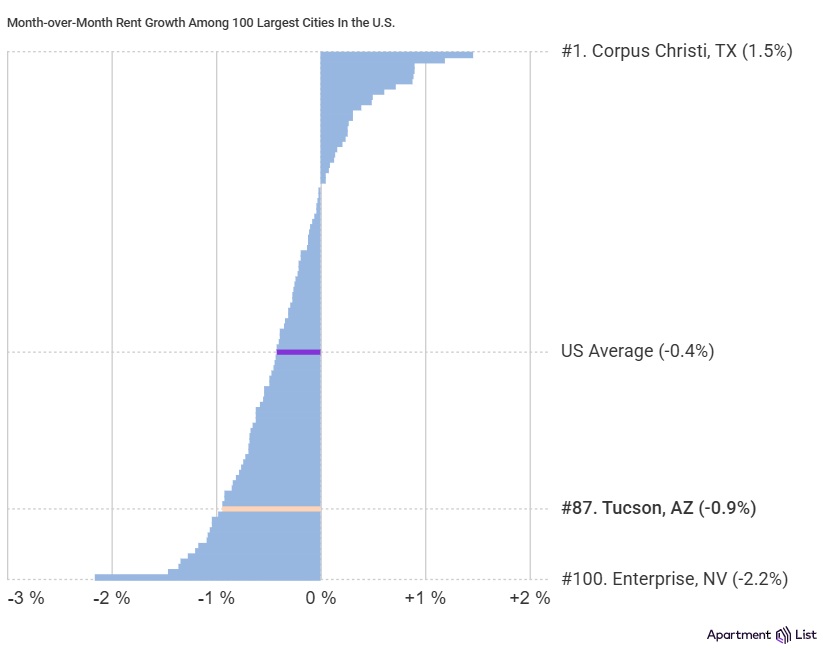
Citywide, the median rent currently stands at $874 for a 1-bedroom apartment and $1,122 for a 2-bedroom. Across all bedroom sizes (ie, the entire rental market), the median rent is $1,048. That ranks #94 in the nation, among the country’s 100 largest cities.
For comparison, the median rent nationwide is $1,224 for a 1-bedroom unit, $1,379 for a 2-bedroom unit, and $1,394 overall. The median rent in Tucson is 24.8% lower than the national median and is similar to the prices found in Tulsa, OK ($1,059) and Fort Wayne, IN ($1,041).
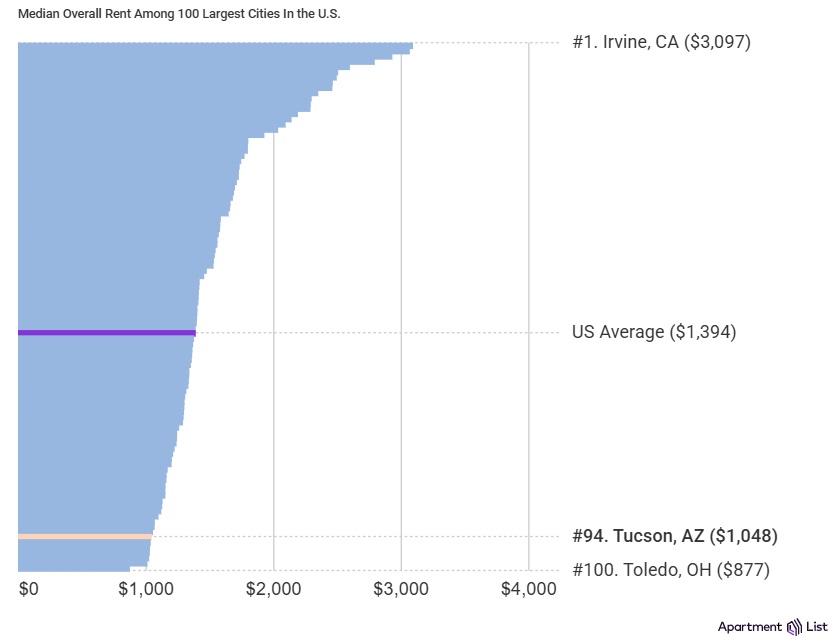
Apartment List is committed to the accuracy and transparency of our rent estimates. We begin with reliable median rent statistics from the Census Bureau, then extrapolate them forward to the current month using a growth rate calculated from our listing data. In doing so, we use a same-unit analysis similar to Case-Shiller’s approach, capturing apartment transactions over time to provide an accurate picture of rent growth in cities across the country. Our approach corrects for the sample bias inherent in other private sources, producing results that are much closer to statistics published by the Census Bureau and HUD. For more details, please see the Apartment List Rent Estimate Methodology.